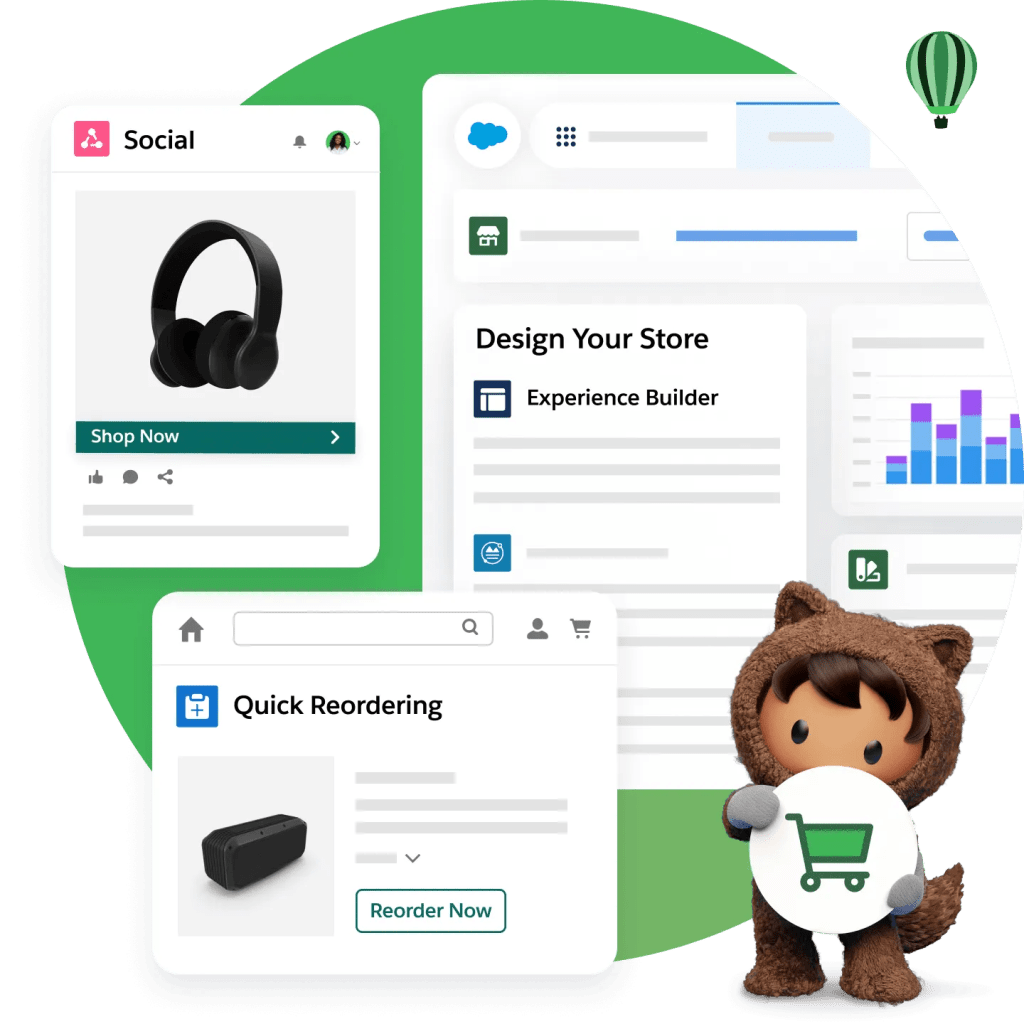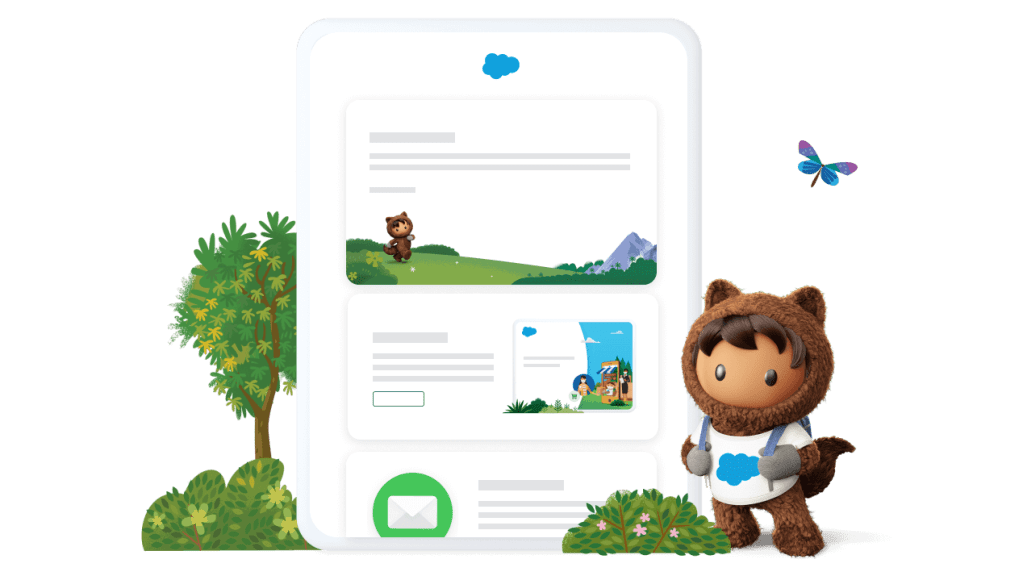
What Is Ecommerce?
Learn about ecommerce, its importance, and how it can grow your business.

Learn about ecommerce, its importance, and how it can grow your business.


Ecommerce has come a long way since its humble beginnings nearly three decades ago. Although disputes remain over the first internet transaction — was it a Sting CD or a pizza? — we can all agree that now, you can buy just about anything online, maybe even a pizza with Sting’s likeness.
What is eCommerce? It’s the online activities that bring such goods to your door. It’s one of the world’s largest industries, and it’s completely changed the way shoppers interact with businesses. Buying and selling online is the norm these days, and AI is making it more efficient and personalized.
With 53% of customers stating they prefer to engage digitally, this market will continue to grow. As a result, what changes are in store as technology and customer expectations evolve? Here’s everything you need to know about digital commerce and how it works.
What you’ll learn:

Here’s how to get your products in front of billions of shoppers
Ecommerce is all the online activity involved in the buying and selling of products and services. In other words, it’s the process for conducting transactions online. When you go to your favorite online retailer to buy a new pair of shoes, you’re engaging in ecommerce. If you pay online for a ticket to attend a music concert or travel by plane, that’s ecommerce, too.
Ecommerce doesn’t only occur on desktop, though. In fact, most ecommerce traffic happens on mobile devices. Spurred by the influence of smartphones and the convenience of online shopping, mobile commerce sales make up almost 75% of ecommerce market share. That means nearly three out of every four dollars spent on online purchases today is done through a mobile device.
How important has online shopping become for businesses and consumers? Check out these stats:
To win your share of the market, it’s important to stay on top of the latest ecommerce trends and know what motivates customers to make purchases.
New ecommerce technology
You’ve heard it before, but it bears repeating: Generative and predictive AI are changing the ecommerce game. They’re making teams more productive and giving them new and valuable ways to engage with customers.
Thanks to AI trained on large language models (LLMs) and historical business data, tasks that used to take your teams days or weeks now take just hours. For example, generative AI can automatically write accurate, detailed product descriptions. With low-code generative development tools, business users at all skill levels can create landing pages and localized sites with less time and effort. Ultimately, new technology means that ecommerce teams can work smarter and faster.
AI is also improving the customer experience. Remember when chatbots could answer only a few select questions? Now, their conversations are more human, more personalized, and more helpful.
Chatbots trained on LLMs can guide shoppers to specific products based on their purchase history, preferences, and past searches. The bots can answer more complex questions, such as: How does this blouse fit? Does it run true to size? By providing these kinds of tailored experiences in real time and at scale, businesses can greatly boost their bottom line and customer satisfaction.
Customers want to shop, however, wherever, and whenever they like. This means online, offline, and, increasingly, in spaces like messaging apps, voice platforms like Amazon’s Alexa, or on social media. In the future of commerce, new channels will crop up. Businesses that find ecommerce success will be those that move quickly and engage customers in new spaces as they emerge.
Customers use multiple channels to browse products and shop online, and businesses must make sure this omni-channel experience is cohesive. That’s the purpose of unified commerce: It means all your back-end systems are connected with your customer-facing channels. This is what creates a seamless customer experience, whether a shopper visits your website, mobile app, social media, or anywhere else.
We know that customers already want personalized experiences. In fact, 53% of them expect companies to anticipate their needs. As AI improves the shopping experience with predictive intelligence and natural language processing, customers will notice which brands are doing it right. A staggering 81% of customers expect faster service as technology advances, and 73% expect better personalization.

Subscribe for tips, how-to's, and the latest news.
An ecommerce channel is any digital space where a customer shops. Think of all the ways you can browse or buy online: You can search for items on a brand’s website, download the brand’s app on your mobile device, or shop on social media. These are a few of the most popular ecommerce channels:
Mobile commerce: Simply put, mobile commerce is shopping through a handheld device (like a smartphone or a tablet). As more customers prefer shopping this way, businesses must meet demands for stellar mobile experiences. No matter what device a customer uses, shoppers want it to be simple and intuitive to browse products, add to cart, and purchase.
Social commerce: Social commerce brings the entire shopping experience — from browsing to checkout — to social media. Customers can discover products as they scroll their social feeds, browse your brand’s social posts for products that match their needs, and then buy directly on a social platform through shoppable content. For customers, social commerce is a convenient way to find and purchase products. For businesses, it’s a great way to quickly expand your reach and your customer base.
Ecommerce websites: An ecommerce website is a powerful sales tool where customers can visit, browse, and purchase your products via mobile or desktop. These sites should include a home page that represents your brand well, product pages that entice shoppers to buy, and a pain-free checkout experience.
Ecommerce brings businesses and customers together on different channels. To make ecommerce work, a business needs to create a user experience on a given channel where customers can easily search for and buy products. This requires certain elements and features, including:
Content: This is where you create and update your user experience. It includes all the content — images, video, product descriptions, and other written ecommerce content — across your entire site. Anything you see on an ecommerce site’s home page, product listing pages, and detail pages is all part of content management. Merchandisers, marketers, designers, and developers are responsible for creating the user experience and bringing it to life on the web.
Site navigation: Think of the last time you bought something online. Were products easy to find? Did you intrinsically know how to browse, add to cart, and pay for your items? That’s the result of a carefully thought-out site navigation strategy. Ecommerce works best when businesses consider the customer journey and how each shopper will use the site.
Payment: If it’s hard to make a purchase or if a payment process feels clunky, customers will find a competitor who does it better. Getting the payment experience right and making it as easy as possible is critical.
Order management: This involves the logistics of ecommerce and everything that happens after a shopper clicks the Buy button. Order management is what gets an item from a warehouse to a customer’s doorstep.
There’s an art and a science to successful ecommerce. Your digital storefront is the “face” of your brand, and it’s often a shopper’s first impression of your business. By combining the above elements with successful strategies for user experience (UX), design, and merchandising, you can create stellar, memorable shopping experiences that keep customers coming back.
It’s hard to understate the importance of a digital storefront. So, what makes an ecommerce website shine? Here are a few successful examples:
Known for bringing clean beauty to the masses with affordable cosmetics, E.l.f. Beauty is a shining example of ecommerce. Neatly categorized products, uniform imagery, and easily scannable product details make it easy — and enjoyable — to browse the site.

YETI makes tough, long-lasting outdoor gear built for all kinds of adventures, and its ecommerce site reflects that: Shoppers can easily browse by activity: hunting, fishing, travel, and more. Promotions are highly visible. Adding an item to your cart? Simple. Checkout is streamlined and the entire shopping experience is seamless.

Sonos
Wireless audio devices can be complex. Are the items compatible with a customer’s other technology? What are the product specifications? Wireless-speaker system leader Sonos offers filters by product type and feature to help customers find what they’re looking for. Product detail pages neatly display all the information a shopper needs to make a decision.

Ecommerce provides the best in convenience and accessibility. It’s a highly efficient way to sell goods and services, whether you’re an all-digital business or you use ecommerce to supplement your physical stores. But the benefits of ecommerce go far beyond the convenience of running your business online. Here’s what you can look forward to once you launch your online store:

Learn how to fulfill and deliver - on your customers’ terms.
Whether you sell products directly to customers or sell services to other businesses, there’s an ecommerce model for you. Here are some of the different types of ecommerce businesses to consider before launching your online store.
B2C ecommerce refers to selling goods or services to individual customers. B2C is what most people think of when they hear the term “ecommerce business.”
Traditional B2C sales occur between a business and a single consumer. In this model, a shopper finds a business online and places an order, and the business sends the product to the customer. A B2C ecommerce strategy, then, involves using customer data to get a full view of customers across their online shopping journeys.
B2B ecommerce refers to selling products or services to businesses. B2B companies typically have a higher order value and more recurring purchases.
B2B ecommerce products and services may include manufacturing equipment, distribution, website hosting services, financial services, or software solutions for businesses, just to name a few. These businesses provide other businesses with the products or services they need to grow.
Like B2C, the D2C ecommerce customer is an individual consumer. The difference is that D2C allows manufacturers to sell directly to consumers instead of (or in addition to) using third-party retailers or wholesalers.
Ecommerce is a proven business model that helps drive revenue growth for some of the world’s largest brands. By getting started with ecommerce, you’ll reach more customers online and significantly increase your business revenue.
Ready to embark on your ecommerce journey? Start here:
Explore flexible tools to help you reduce costs, increase sales, and adapt quickly. To grow your revenue online, check out all Commerce Cloud has to offer.

Grow your business with the most complete commerce platform.